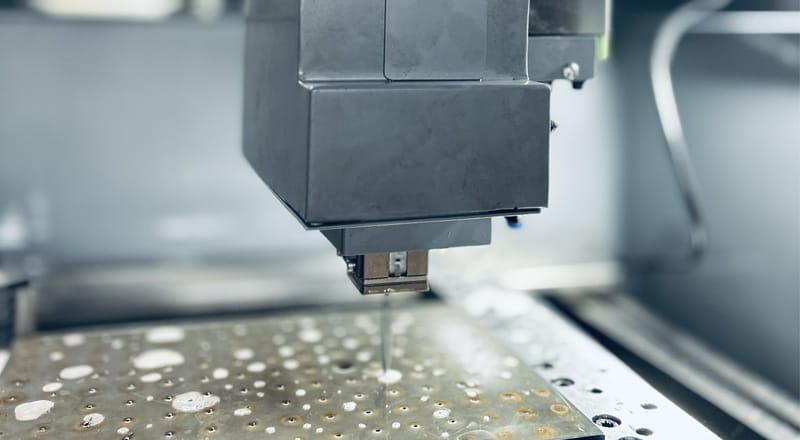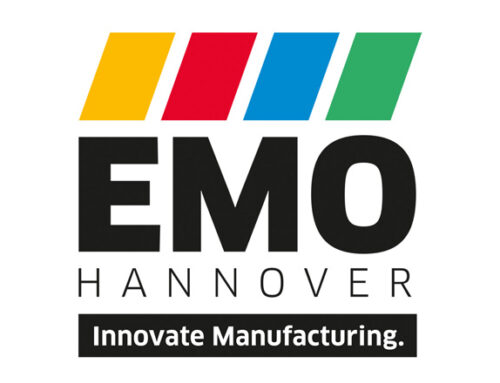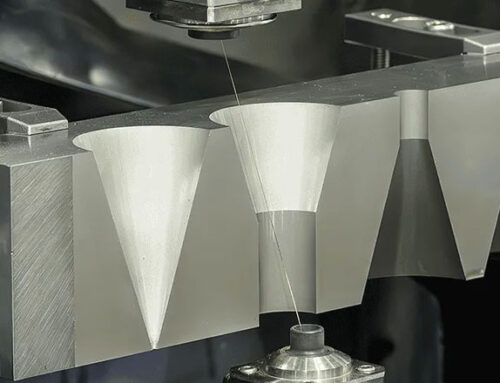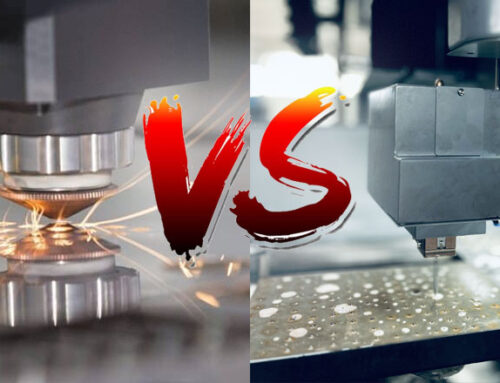After spending over a decade working with wire EDM machines, I’ve learned that one of the most common questions I get from both newcomers and seasoned machinists is: “Which speed should I choose?” It’s a fair question, and honestly, the answer isn’t always straightforward. Let me walk you through what I’ve discovered about fast, medium, and slow wire EDM machines – and trust me, there’s more to it than just the cutting speed.

Overview of Wire EDM Cutting Speeds
Think of wire EDM cutting speeds like driving a car. You can floor it on the highway, cruise comfortably in the city, or crawl through a parking lot looking for the perfect spot. Each has its place, and choosing the wrong one for the situation can be costly – literally.
Fast Wire EDM (High Speed, Lower Accuracy)
Fast wire EDM is the speed demon of the EDM world. We’re talking cutting speeds of 80-250mm²/min, which might not sound lightning-fast until you’ve watched material slowly disappear over hours with slower methods. I like to think of fast wire EDM as the rough carpenter of precision machining – it gets the job done quickly, but you wouldn’t ask it to carve intricate details.
The secret sauce here is aggressive discharge energy. These machines pump out high-energy pulses that blast away material like a controlled explosion. You’ll typically see brass or molybdenum wires ranging from 0.18-0.25mm in diameter, and the whole setup runs on either emulsion or deionized water as the dielectric fluid.
Now, here’s the trade-off that keeps me up at night sometimes: surface finish sits around Ra 3.2-6.3μm, and you’re looking at tolerances of ±0.02-0.05mm. Not terrible, but not exactly watch-making precision either. I’ve found fast wire EDM works brilliantly for rough cutting thick materials, scrap removal, and high-volume jobs where you can live with the finish quality.
Medium Wire EDM (Balanced Performance)
If fast wire EDM is a race car, medium speed is your reliable daily driver. Cutting speeds hover around 30-80mm²/min – fast enough to keep production moving, but controlled enough to maintain decent quality. This is where most shops find their sweet spot, and for good reason.
What I love about medium wire EDM is how modern machines have gotten smart about parameter optimization. The CNC systems today can automatically adjust discharge settings based on material thickness, hardness, and even the complexity of your cut path. It’s like having an experienced machinist built into the software.
You’ll get surface finishes around Ra 1.6-3.2μm with tolerances typically in the ±0.01-0.03mm range. Not bad at all, especially when you factor in the reasonable cycle times. I’ve seen many tool and die shops build their entire production strategy around medium-speed machines, and it makes perfect sense from both a quality and efficiency standpoint.
Slow Wire EDM (High Precision, Higher Cost)
Slow wire EDM is the surgeon of the machining world – deliberate, precise, and expensive. We’re talking 10-30mm²/min cutting speeds, but when you need accuracy that would make a Swiss watchmaker proud, this is your only option.
The technology behind slow wire EDM fascinates me. These machines use incredibly fine wires (0.1-0.18mm diameter) and ultra-precise discharge control. Every spark is calculated, every parameter optimized for minimal heat-affected zone. The result? Surface finishes down to Ra 0.8-1.6μm and tolerances that can hit ±0.005-0.01mm consistently. Some high-end machines I’ve worked with can even achieve ±0.002mm – that’s getting into metrology-grade territory.
The catch? Everything costs more. The wire, the deionized water systems, the climate-controlled environment, the constant calibration – it all adds up. But when you’re cutting aerospace components or medical implants where failure isn’t an option, the investment makes perfect sense.
Cutting Accuracy and Surface Quality
Here’s where things get interesting from an engineering perspective. Surface quality isn’t just about how pretty your part looks – it directly impacts performance, especially in high-stress applications.
Fast wire EDM leaves its signature: visible discharge craters and a relatively thick recast layer. You’ll often need secondary operations to clean this up, which eats into your time savings. I’ve learned to factor this into my project timelines because ignoring it leads to unhappy customers.
Medium wire EDM hits that sweet spot where you get acceptable surface quality without breaking the bank. Modern adaptive control systems help maintain consistency even as cutting conditions change. The surface finish is usually good enough for most applications straight off the machine.
Slow wire EDM produces surfaces that are almost mirror-like in some cases. The multiple-pass capability means you can rough out quickly, then finish with incredible precision. I’ve seen parts come off these machines that needed zero post-processing – they went straight to assembly.
Operating Cost and Maintenance Requirements
Let’s talk money – because that’s what keeps the lights on. Fast wire EDM wins hands down on operating costs. Lower wire consumption, cheaper dielectric, less stringent environmental requirements. The downside? You might pay for it in secondary operations or rejected parts.
Medium wire EDM offers the best cost-per-quality ratio in my experience. You’re not throwing money at extreme precision you don’t need, but you’re not sacrificing quality that will cause problems down the line.
Slow wire EDM is expensive to run – no getting around it. Premium wire, high-quality dielectric, constant environmental monitoring, frequent calibration. But when you’re making parts that sell for thousands of dollars each, these operating costs become negligible.
Which Type Fits Your Application?
Tool and Die Manufacturing
This is medium wire EDM territory. Tool and die work demands a balance between efficiency and precision that medium-speed machines deliver perfectly. I’ve seen shops try to use fast machines for everything and end up spending more time on secondary operations than they saved in cutting time.
For roughing operations on large dies, fast wire EDM makes sense. For finishing critical surfaces and precise fits, you might step down to slow wire EDM. But for the bulk of tool and die work, medium speed is your friend.
Aerospace & Medical Components
No compromises here – slow wire EDM all the way. When you’re cutting titanium turbine blades or surgical instruments, the material cost alone justifies the precision investment. I’ve worked on projects where a single scrapped part costs more than a day’s operating expenses.
The traceability requirements in these industries also favor slow wire EDM. The process repeatability and surface consistency make quality documentation much easier.
General Metal Cutting
For general fabrication, prototyping, and non-critical components, fast wire EDM often makes the most sense. You’re prioritizing throughput over precision, and that’s perfectly reasonable for many applications.
The key is being honest about your requirements. I’ve seen too many shops over-specify precision they don’t need, then wonder why their costs are so high. Match your process to your requirements, not your ego.
After all these years in the business, my advice is simple: understand your true requirements, factor in all costs (including secondary operations), and don’t be afraid to have different machines for different jobs. The most successful shops I’ve worked with treat their EDM capabilities like a toolkit – each machine has its purpose, and knowing which tool to use when is what separates good machinists from great ones.
Need help fine-tuning your EDM parameters or upgrading your system? Contact our team for personalized support and technology consultation.






Leave A Comment